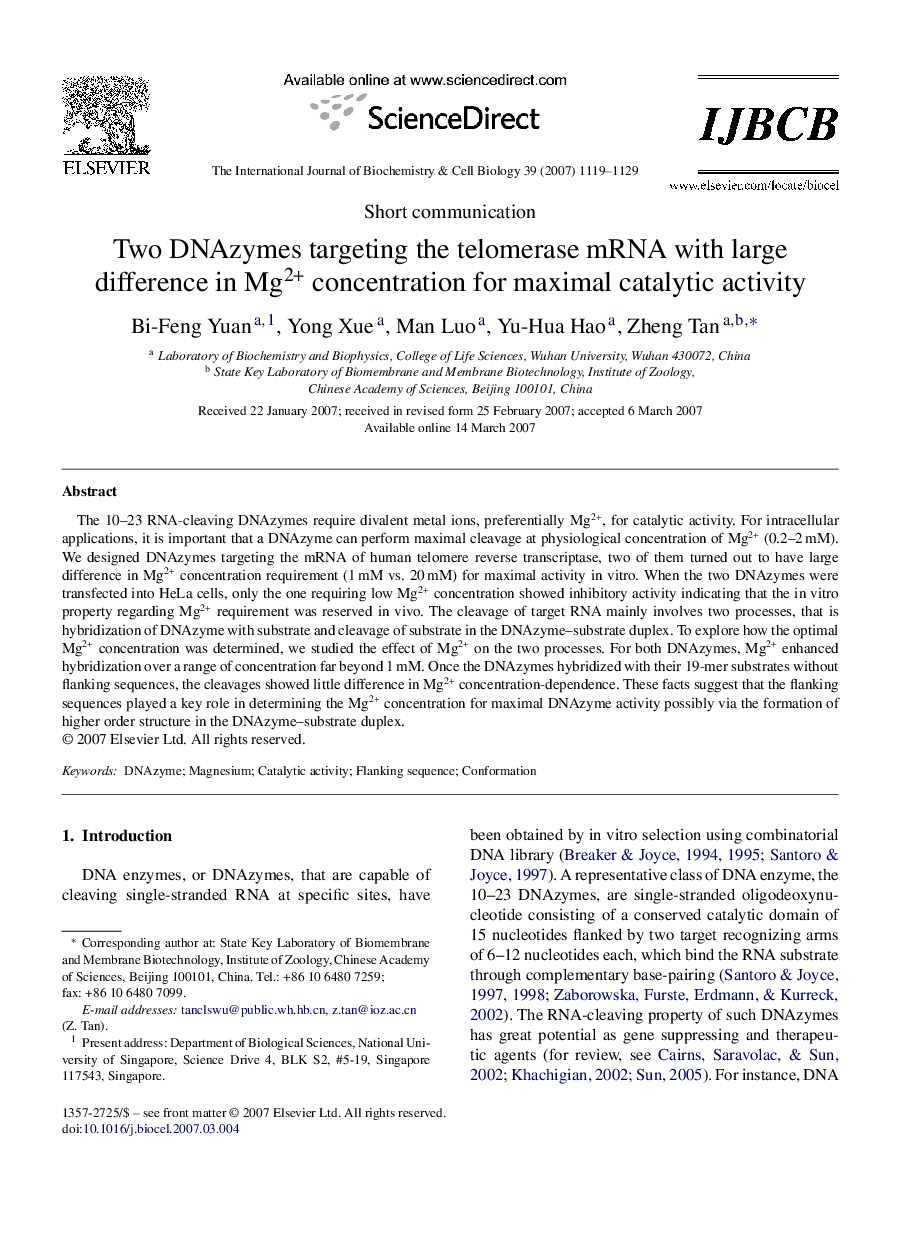| Article ID | Journal | Published Year | Pages | File Type |
|---|---|---|---|---|
| 1985273 | The International Journal of Biochemistry & Cell Biology | 2007 | 11 Pages |
The 10–23 RNA-cleaving DNAzymes require divalent metal ions, preferentially Mg2+, for catalytic activity. For intracellular applications, it is important that a DNAzyme can perform maximal cleavage at physiological concentration of Mg2+ (0.2–2 mM). We designed DNAzymes targeting the mRNA of human telomere reverse transcriptase, two of them turned out to have large difference in Mg2+ concentration requirement (1 mM vs. 20 mM) for maximal activity in vitro. When the two DNAzymes were transfected into HeLa cells, only the one requiring low Mg2+ concentration showed inhibitory activity indicating that the in vitro property regarding Mg2+ requirement was reserved in vivo. The cleavage of target RNA mainly involves two processes, that is hybridization of DNAzyme with substrate and cleavage of substrate in the DNAzyme–substrate duplex. To explore how the optimal Mg2+ concentration was determined, we studied the effect of Mg2+ on the two processes. For both DNAzymes, Mg2+ enhanced hybridization over a range of concentration far beyond 1 mM. Once the DNAzymes hybridized with their 19-mer substrates without flanking sequences, the cleavages showed little difference in Mg2+ concentration-dependence. These facts suggest that the flanking sequences played a key role in determining the Mg2+ concentration for maximal DNAzyme activity possibly via the formation of higher order structure in the DNAzyme–substrate duplex.
